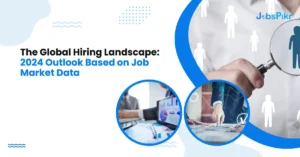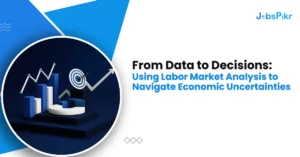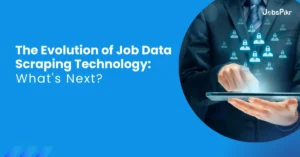The function of Human Resources has come a long way from its clerical-focused role decades ago. Human resources management has advanced in four waves, from focusing solely on administrative work in its first wave to evolving into its second wave concerning HR practices – sharing of knowledge and establishing consistent approaches through innovative thinking.
Today, most organizations are in their third and fourth waves – strategy and partnership, where the HR team works as a strategic business partner to integrate human resources with business outcomes, while also considering the needs of the community, stakeholders, clients, and employees.
The evolution of HR practices and a shift towards advanced thinking, combined with significant investment, has led to the growth of HR Analytics and Talent Intelligence. These tools provide organizations with a data-driven approach to decision-making by analyzing both internal and external data sources.
By analyzing information on acquisition, recruitment, and other internal HR metrics pertaining to employee performance and retention, organizations can gain valuable insights that inform their strategic HR initiatives and enhance their ability to achieve their business goals.
Is there a difference between HR Analytics and Talent Intelligence?
Often confused, HR analytics and Talent Intelligence are two sides of the same coin. The former, also known as People analytics, only concerns itself with internal data pertaining to an organization’s existing workforce. By using historical data, performance records, machine learning techniques, and even AI, businesses can derive inferences on the overall company’s performance and areas of improvement.
HR analytics is a crucial tool for organizations seeking to understand the health of their workforce and make informed HR decisions. Its main function is to analyze various data sources, such as employee experience, performance, capabilities, development, and survey data, to provide HR professionals with actionable insights.
By using HR analytics, organizations can identify gaps in their workforce and track progress toward closing them. The insights gained enable HR teams to make data-driven decisions that enhance employee performance, improve employee engagement and satisfaction, and support the organization’s overall success. By continuously monitoring workforce data, HR analytics helps organizations stay ahead of potential workforce issues and make proactive, informed decisions that drive positive outcomes.
On the other hand, Talent Intelligence is a broader approach concerning external factors. For businesses to truly prosper, it isn’t sufficient to only look internally. They must assess themselves to market standards and use that data to improve operations. That’s where TI comes into play: it provides demographic data, labor market trends, competitor tracking, in-demand roles and skillset, and compensation analysis.
With Talent Intelligence, businesses can make accurate expansion decisions in different geographies, build an efficient workforce through future planning, and understand talent availability and concentration pools for different roles. This is one of the most important reasons why TI must be a core function of the HR strategy and not an afterthought.
Investing in TI provides businesses with a long-term benefit, as its focus extends beyond the present and on future planning. Labor market insights have the potential to greatly impact a business’s growth trajectory by providing a comprehensive view of the market landscape. These insights can highlight lucrative opportunities for success and inform strategic decision-making in areas such as talent acquisition, workforce planning, resource allocation, and business development. It also helps identify skill shortages and surpluses that can be imperative for long-term sustainable growth.
Toby Culshaw, Global Head of Talent Intelligence, at Amazon, defines the two functions as interdependent yet linked together in certain aspects. In this interview with David Green, about differences between People analytics and Talent Intelligence, he says*, “There are some operational and philosophical differences. Operationally, People analytics looks at internal metrics, internal efficiencies, internal KPI’s, and generally speaking, the internal landscape. Generally speaking, TI looks at the external landscape. Neither of them have complete power unless you bring them together.”
The Future is in Employing Insights
Living in a data-driven era, the impact of HR analytics along with Talent Intelligence on a business’s success cannot be ignored. In a competitive landscape wherein, the market (for most industries) is saturated with several players, standing out and getting enough revenue to stay profitable is a major challenge.
It has become crucial now – more than it ever was – to make informed decisions backed by data for every type of organization, large or small. Though most people may view TI’s and HR analytics’ impact as contained only to human resources or hiring activities, its applications extend to several other areas of business.
From operations to expansions, company culture to engagement, employee turnover to attracting top talent, the betterment of all these functions is rooted in data stemming from Human Resource analytics and Talent Intelligence.
*Toby Culshaw’s quote is referenced from his video in an interview with David Green. Amendments and omissions (without altering meaning) in his speech have been made for clarity and comprehension.



